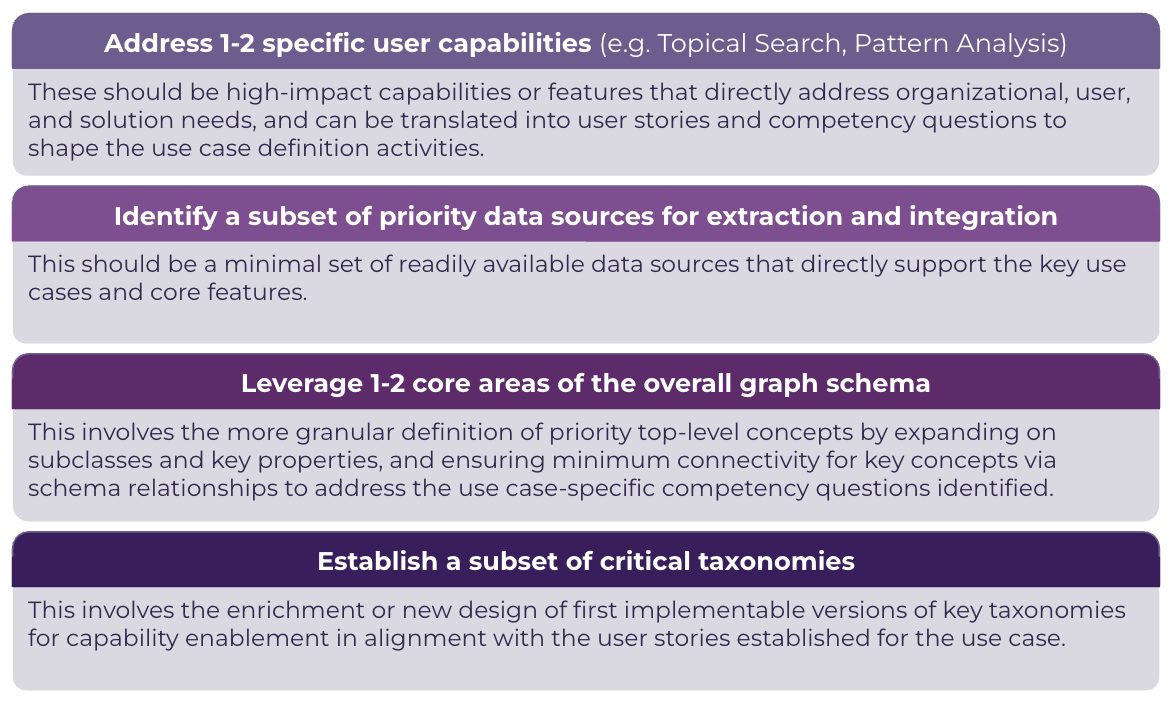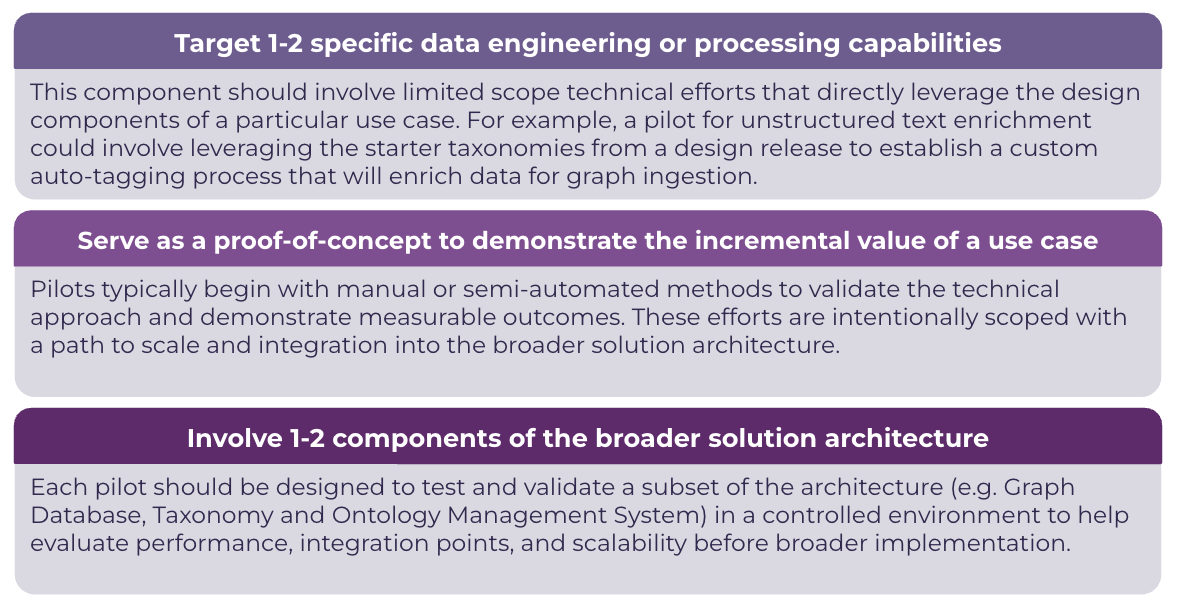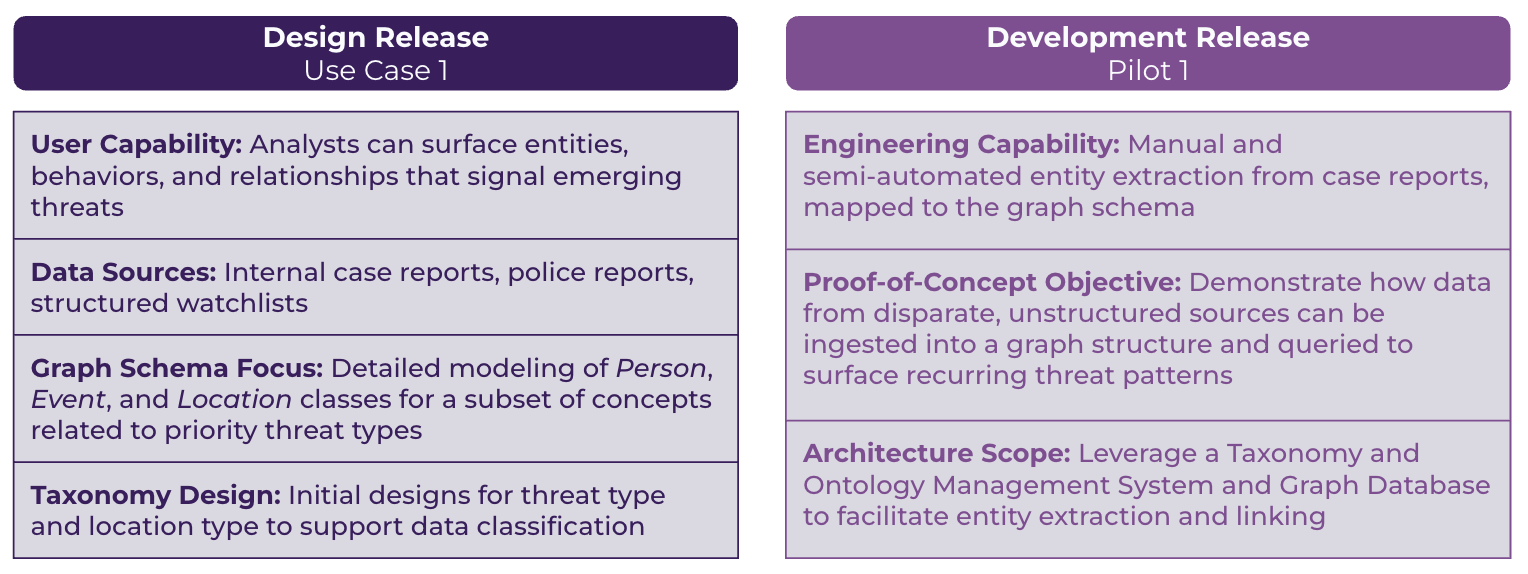As organizations invest in enterprise AI and knowledge intelligence, the semantic layer serves as a critical foundation for providing a consistent, contextual framework that connects data assets across multiple sources to enable shared understanding, interoperability, and more intelligent use of information. Translating this conceptual foundation into an effective, functioning semantic layer for the enterprise requires repeatable processes supported by a well-defined operating model for incremental delivery. Similar to other enterprise frameworks and solutions, a semantic layer involves specific use cases, data models, tooling/applications, and roles and skillsets required to implement and scale over time. This article will explore the components of an operating model that EK uses to define and structure semantic layer implementation efforts for delivering continuous value to clients while laying the groundwork for scalable solutions.
Semantic Layer Operating Model – The Components
Establishing a clear operating model is essential for translating the vision of a semantic layer into a practical, scalable reality. It enables teams to deliver value incrementally, define release scopes that are both feasible and impactful, and build repeatable frameworks that support consistent expansion over time. This also ensures the implementation work connects to the broader product vision and semantic layer strategy for an organization so that each decision directly contributes to long-term goals.
At EK, we often structure our semantic layer operating model around two primary components that form the foundation of an MVP release: design releases and development releases. EK is currently putting these components into practice with a government agency in the intelligence analysis space as we transition from the definition of a semantic layer strategy into an MVP implementation phase for a user-facing semantic solution. Delivery is broken into iterative cycles that combine use case and data model expansion with user feature and service development. To ensure alignment across teams, it is critical to not only define the scope and content of these releases, but also establish a shared language for describing them and expected timeframes of completion. In collaboration with the agency, EK defined “use cases” as 1-month units of design releases, “pilots” as staggered 1-month units of development releases, and “MVP” as the culminating technical release that integrates multiple use cases and pilots into a cohesive solution over the course of 6 months.
Sample Structure for Semantic Layer Operating Model
It is important to note to that these are not hard and fast rules for what should constitute your semantic layer operating model, as components and timeframes are shaped by team structures and capacity, existing tooling and/or procurement timelines, business expectations for solution releases, and other organization or solution-specific requirements. The following definitions can serve as a guide to tailor an operating model that best fits your needs and constraints.
Design Release
Design releases focus on the strategic and conceptual definition of a semantic layer use case. They are the foundation for implementation, ensuring that each increment is grounded in clear user needs, meaningful data connections, and well-scoped schema design. A design release captures a focused slice of the broader vision, allowing for thoughtful expansion while maintaining alignment with the overall product vision and semantic layer strategy.
For example, a semantic layer design release or “use case” for a knowledge graph-based solution should:
Design releases help teams align on scope and semantic modeling needs, surface technical dependencies early, and create a shared understanding of the solution design priorities to enable technical development.
Development Release
Development releases translate design outputs into working technical components. These releases prioritize feasibility, rapid iteration, and incremental value, while maintaining a clear path toward scalability. Development releases often begin with limited-scope pilots that validate capability approaches and inform future automation and scale.
A semantic layer development release or “pilot” for a graph-based solution should:
Development releases help demonstrate tangible progress and mitigate risks for enterprise-level implementation to build towards the encompassing product vision in alignment with an organization’s semantic layer strategy.
MVP Release
The below image illustrates how design and development releases work together, with a generalized example from EK’s semantic layer implementation strategy with the government agency focused on intelligence analysis.
Sample Design and Development Release Scopes
Ultimately, these iterative design and development releases culminate in an MVP: a fully integrated release of the semantic layer-based solution that brings together multiple completed use cases and pilots into a unified, usable platform. It includes the implemented semantic models, integrated data sources, and functional technical components necessary to support a robust set of targeted user capabilities, and is ready for use in a broader context within the organization. The MVP manifests core elements of the product vision, demonstrating the full value of incremental delivery and providing a clear path for business adoption, continuous expansion, and long-term scalability of the solution as part of the semantic layer.
Conclusion
Establishing a well-defined operating model is critical for successfully developing and scaling a semantic layer solution. By structuring work around design and development releases, organizations can maintain clear alignment between technical implementation, business needs, and product strategy. This model enables teams to deliver incremental value, iterate based on lessons learned, and lay the groundwork for scalable, long-term solutions that drive more connected decision-making across the enterprise. Contact EK to learn more about defining a solution strategy and structuring an operating model for implementing a semantic layer at your organization.




